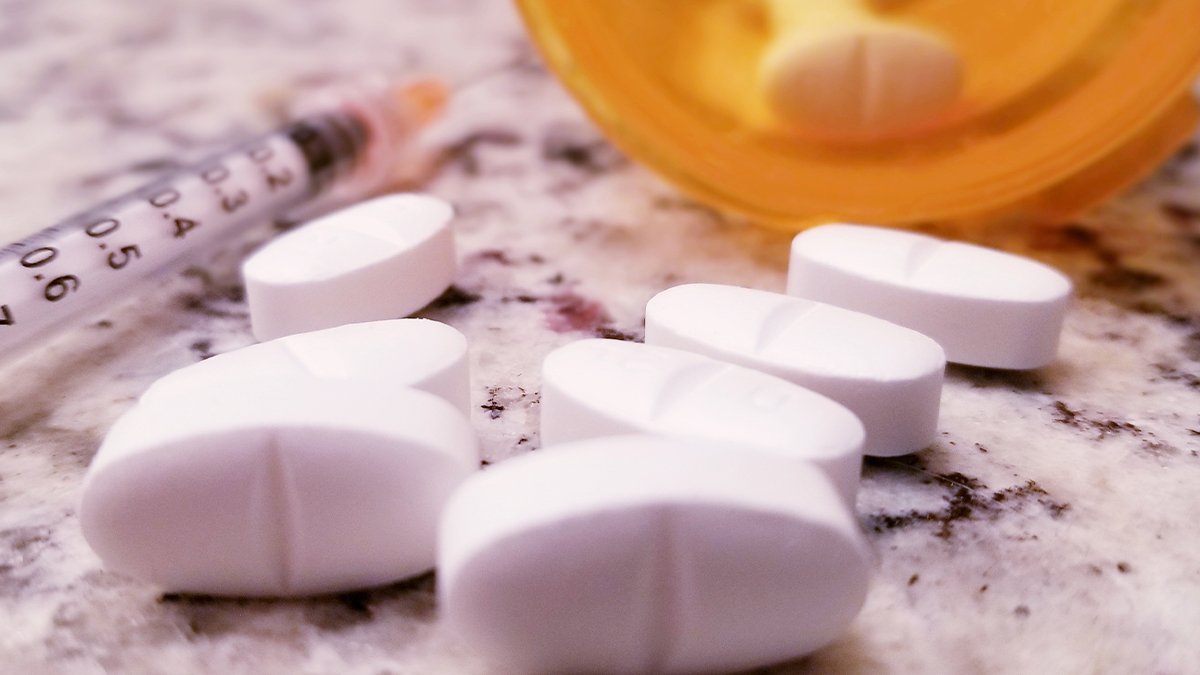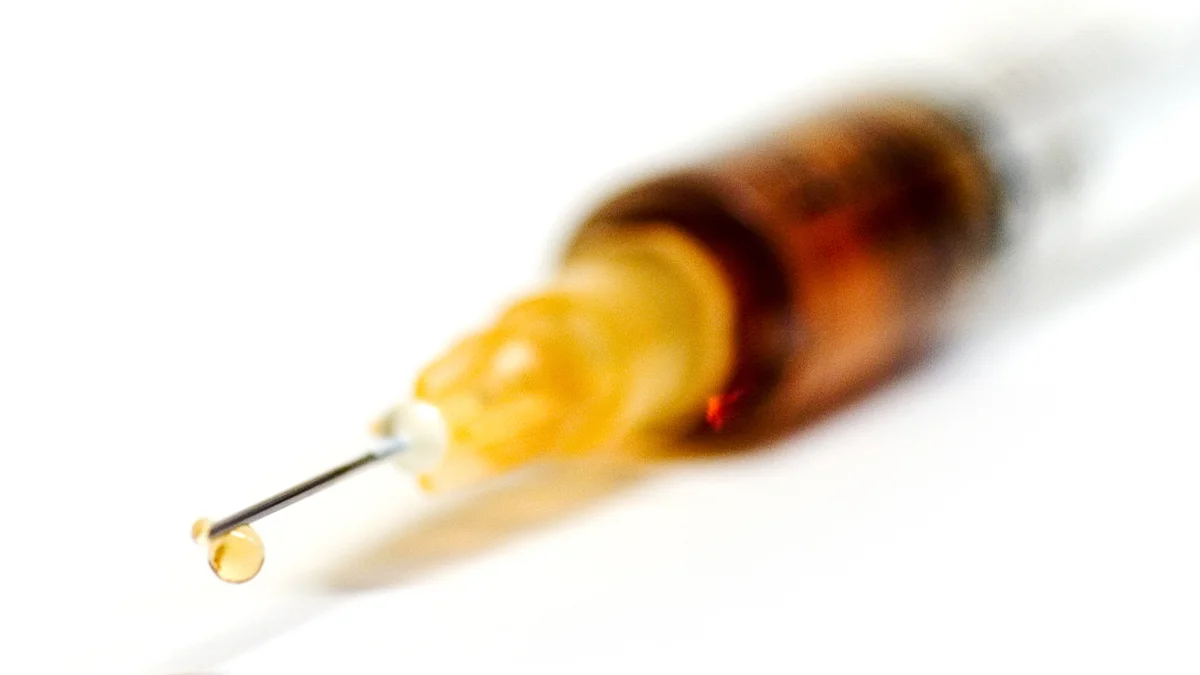
Lyrica With Suboxone: Risks And Safe Practices
The Recovery Team-Newton explores whether taking Lyrica with Suboxone is safe. Explore potential risks and guidelines

Buprenorphine medication-assisted treatment (MAT) is a form of therapy used to treat opioid addiction. Buprenorphine is often prescribed in combination with counseling and support services to deal with the psychological and social aspects of addiction.
One of the key advantages of buprenorphine-based MAT is its safety profile. The article explores the history, efficacy, and clinical implications of utilizing buprenorphine as part of a treatment approach for opioid use disorder.
Buprenorphine plays a vital role in MAT due to its efficacy in the management of severe withdrawal symptoms. Here is what the article covers:
The Recovery Team-Newton offers support to those who have an addiction. Call at (508) 978-2772 for more guidance and support.
Medication-assisted treatment (MAT) is a wide approach to treating substance use disorders (SUDs). It combines medication with therapy and support services. MAT medications help regulate brain chemistry and block the euphoric effects of alcohol and opioids.
MAT medications are carefully selected based on individual needs, type of substance use disorder, and medical history. Common medications used in MAT include methadone, buprenorphine, naltrexone, and acamprosate. These medicines work differently but share the goal of supporting recovery by reducing withdrawal symptoms and preventing relapse.
MAT is highly effective in helping people achieve recovery from opioid withdrawal, alcohol use disorder, and other substance dependencies. MAT is often combined with substance abuse counseling, therapy, and support groups. This treatment approach provides patients with the tools and resources to address different issues.
Buprenorphine is a synthetic opioid obtained from thebaine, an alkaloid found in the opium poppy. Its chemical structure presents its unique medicinal properties compared to traditional opioids. It binds to the mu-opioid receptors in the brain as opioids do but with unique properties that make it safer and less addictive.
Buprenorphine comes in various formulations, including sublingual tablets, sublingual films, injections, and implants. Different formulations offer flexibility in dosing and administration, considering the individual needs and treatment settings.
Sublingual tablets and films offer convenient, noninvasive drug administration. They allow precise dosing and ease of use in outpatient settings. Injections provide a longer-acting option suitable for patients requiring less frequent dosing. In contrast, implants offer sustained release over an extended period.
The development of buprenorphine traces back to the mid-20th century when researchers wanted safer alternatives to existing opioids. Its early synthesis in 1966 marked an innovation in opioid pharmacology. Over the decades, clinical trials verified its efficacy in treating opioid dependence and chronic pain.
The unique properties of buprenorphine make it a valuable tool in medication-assisted treatment (MAT), providing significant benefits. Here are the details:
Buprenorphine is primarily indicated for opioid use disorder (OUD) and moderate to severe chronic pain. It is used in medication-assisted treatment (MAT) to ease opioid desires and withdrawal symptoms.
Contraindications include hypersensitivity to buprenorphine, severe respiratory or hepatic impairment, and concurrent use of certain CNS depressants. It’s also contraindicated in patients with acute alcohol intoxication or those taking monoamine oxidase inhibitors (MAOIs).
Buprenorphine can be administered through different routes. Administration methods include sublingual tablets or films, buccal films, transdermal patches, and injectable forms. The sublingual and buccal methods are the best for opioid dependence, allowing for better absorption and patient improvement.
Transdermal patches are generally used for chronic pain management and can constantly release medicines. Injectable forms, like buprenorphine long-term release, offer various treatment options, reducing the need for daily dosing.
For opioid dependence, buprenorphine dosing begins with an induction phase. The induction phase starts at 2-4 mg and titrates to 8-16 mg daily. Maintenance doses vary but usually range between 8-24 mg per day.
Transdermal patches deliver 5-20 micrograms per hour for chronic pain and are replaced every seven days. Dose adjustments are made based on patient response and clinical guidelines to prevent adverse effects.
Remember, proper drug administration and adherence to recommended dosages are necessary for the practical and safe use of medications in treatment.
Buprenorphine stands as a hope for opioid addiction treatment. It offers promise and effectiveness in combating the public health crisis.
Clinical studies demonstrate that buprenorphine is highly useful in treating opioid addiction. The success rates of buprenorphine indicate significant reductions in illicit opioid use and improved retention in opioid treatment programs.
Research shows that patients receiving buprenorphine are more likely to exhibit higher rates of treatment retention compared to others. These studies also highlight the efficacy of buprenorphine in reducing opioid cravings and withdrawal symptoms.
When comparing buprenorphine with other Medication-Assisted Treatment (MAT) options like methadone or naltrexone, several factors are important. Buprenorphine offers advantages such as a lower risk of respiratory depression, reduced potential for abuse, and suitability for office-based treatment.
While methadone treatment might be more useful for severe addiction cases, buprenorphine’s safety profile and flexibility often make it the preferred choice, particularly in outpatient settings and for persons in the early stages of opioid withdrawal.
Studies show that buprenorphine mainly contributes to long-term recovery and relapse prevention in persons with opioid addiction. Patients on buprenorphine care therapy show lower rates of relapse and improved social functioning over long periods.
However, relapse remains an important concern, mainly upon termination of treatment of substance use disorders. Therefore, the duration of buprenorphine therapy and the incorporation of psychosocial interventions are crucial in preventing relapse and promoting lasting recovery.
Thus, the effectiveness of buprenorphine in treating opioid addiction represents a substantial milestone in addiction medicine, offering renewed hope.
Understanding the severe side effects and risks associated with buprenorphine is vital for ensuring the safe and potent treatment of OUD. Here are the certain ones:
Buprenorphine can cause several common side effects, typically mild to moderate. These include headaches, nausea, constipation, sweating, and insomnia. Some patients may experience dizziness, drowsiness, or dry mouth. Cases of deep sedation or coma may occur, particularly when combined with other CNS depressants.
Serious adverse reactions include severe respiratory depression, particularly when combined with other central nervous system depressants. Hepatotoxicity, or liver damage, can also occur, requiring regular liver function tests. Other serious side effects include allergic reactions such as rash, itching, swelling, and severe dizziness.
Effective risk management and monitoring of buprenorphine therapy involve regular patient evaluations and monitoring for signs of misuse or abuse. Educating patients about the dangers of mixing buprenorphine with other CNS depressants, such as alcohol or benzodiazepines, is important.
Ensuring patient safety and adequate treatment outcomes remains the ultimate goal in the use of buprenorphine for opioid addiction.
The treatment and management of addiction face significant challenges due to various stigmas and systemic barriers. These are the details:
Medication-assisted treatment (MAT) often suffers from stigma both within and outside the medical community. Many people view MAT as simply replacing one addiction with another rather than considering it as an effective treatment of opioid dependence. This stigma stops individuals from seeking help and following treatment protocols.
Geographic, economic, and systemic barriers can limit access to MAT. Rural areas often need specialized treatment centers, making it easier for people to find appropriate care. Even in urban areas, the cost of treatment can be unaffordable, especially for those without suitable insurance coverage. Enhancing accessibility involves expanding telemedicine services and increasing funding for MAT programs.
Societal and cultural factors also play an important role in how MAT is perceived and utilized. Cultural beliefs and values may discourage people from seeking MAT in some communities. People consider it as a moral failing rather than a medical necessity. Overcoming these challenges requires approaches that respect and integrate the values and beliefs of different communities. By overcoming stigmatization and improving accessibility and affordability, we can build a more effective environment for those seeking recovery.
By combining buprenorphine with other interventions, individuals can receive the holistic care needed to address their addiction effectively. Here are some useful approaches:
Buprenorphine’s effectiveness is enhanced when combined with counseling and behavioral therapies. Integrated approaches, such as cognitive behavioral therapy (CBT), motivational interviewing, and support groups, complement the benefits of buprenorphine. These therapies provide patients with the tools and coping mechanisms necessary to navigate life.
No two individuals struggling with addiction are exactly alike. Personalized treatment approaches acknowledge this diversity and tailor behavioral interventions to meet the needs of each patient. By considering factors such as medical history and co-occurring disorders, healthcare providers can optimize the effectiveness of buprenorphine treatment.
Recovery from opioid addiction is a collective effort. Support systems and a continuum of care are vital elements of comprehensive treatment plans that integrate buprenorphine. These systems involve medical professionals, therapists, peer support groups, and loved ones, providing a network of encouragement and assistance throughout the recovery process.
Through these integrated efforts, we can improve treatment outcomes and empower people to reclaim their lives from the grip of addiction.
MAT combines FDA-approved medications like methadone, buprenorphine, or naltrexone with counseling and behavioral therapies. These drugs work by stabilizing brain chemistry, reducing cravings, and minimizing withdrawal symptoms, making the recovery process easy.
Counseling and behavioral therapies provide psychosocial treatment for addiction. Therapies help individuals understand and change behaviors that contribute to substance abuse. MAT is typically delivered in outpatient settings under medical supervision, allowing personalized treatment plans.
MAT treatment typically progresses through several phases. Initially, patients undergo an assessment to determine the most suitable medication and dosage. This phase involves understanding the patient’s medical history and any co-occurring mental health conditions. Once the medication is initiated, patients enter the stabilization phase, where the dosage is adjusted to achieve optimal results.
During this phase, patients also receive counseling and support to address underlying issues contributing to their addiction. After stabilization, patients transition to the maintenance phase, where they continue medication use alongside ongoing counseling and support.
Buprenorphine, a medicine commonly used in MAT, is a partial opioid agonist. A partial agonist stimulates the opioid receptors in the brain but to a lower degree than a full opioid agonist like heroin or oxycodone. While buprenorphine can produce physical dependence with regular use, it has a lower potential for addiction compared to full agonists.
When taken as prescribed under medical supervision, the risk of addiction to buprenorphine is significantly reduced. However, like any prescription medication, misuse or abuse can lead to dependence and addiction.
The Recovery Team-Newton provides vital support and structure for individuals navigating the path of addiction or mental health recovery.
Our intensive outpatient program (IOP) caters to those needing treatment for substance use disorders while keeping daily commitments. We provide medication-assisted treatment (MAT), a holistic approach to recovery. In addition, our dual diagnosis treatment offers comprehensive care, addressing co-occurring mental health disorders alongside addiction.
Call us at (508) 978-2772 to discover more about our comprehensive services and take the first step toward a healthier tomorrow.

The Recovery Team-Newton explores whether taking Lyrica with Suboxone is safe. Explore potential risks and guidelines

Learn about Suboxone injection side effects and explore recovery solutions in this guide by The Recovery Team-Newton.